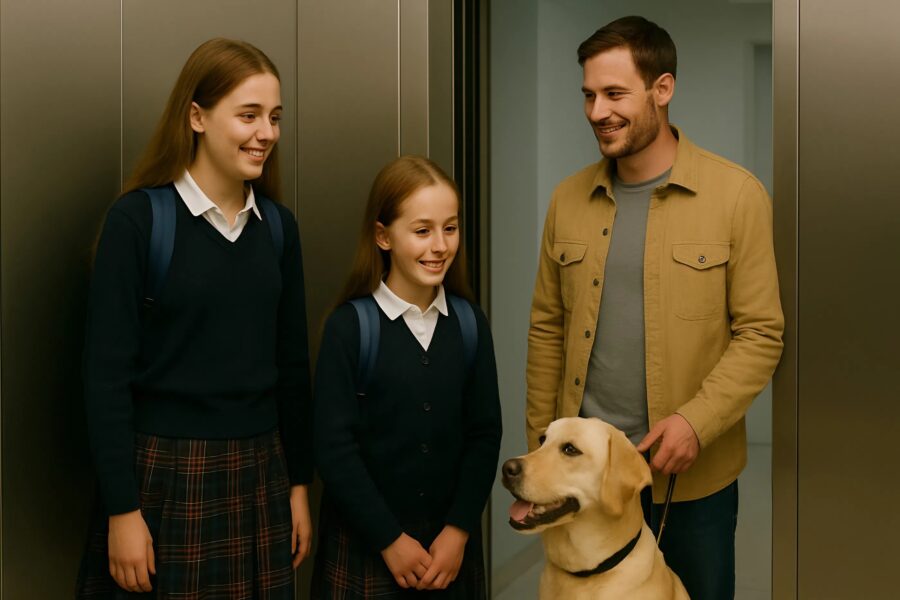Some memories are etched into your mind forever, not because they were dramatic, but because they were profoundly strange in the moment and life-altering in hindsight. For me, that memory is from five years ago, a seemingly ordinary afternoon after school. I was sixteen, and my little sister was ten. We stepped into our building’s elevator, and as the doors closed, our neighbor, Tom, and his friendly golden retriever joined us. We saw them every day and always exchanged cheerful hellos. The dog was usually a calm, gentle giant who loved a good ear scratch.
But that day was different. The moment the dog stepped in, it froze. Its focus locked onto my sister with an intensity I had never seen in an animal before. It ignored Tom’s soothing commands, its body rigid. Then, it did something that sent a chill down my spine. It placed its paws firmly on my sister’s shoulders, sniffed her intently, and began to bark—not a playful yip, but a sharp, persistent, alarming bark. Tom pulled hard on the leash, his face a mask of confusion and apology, but the dog would not be deterred. It was as if my sister was a stranger posing a grave threat.
When the elevator doors finally opened, Tom didn’t just rush off with an apology. He turned to me, his expression serious, and asked, “Is your sister feeling okay?” He then explained in a hushed, urgent tone that his dog wasn’t just a pet; it was a highly trained medical alert animal, specifically skilled at detecting subtle changes in human biochemistry. The dog’s bizarre behavior wasn’t aggression; it was an alert. Tom’s earnest concern cut through my teenage skepticism. I felt a cold knot of fear form in my stomach. I ran home and immediately told my parents the whole story, pleading with them to take it seriously.
My parents, though naturally skeptical, were swayed by the strange specificity of the event and Tom’s credible explanation. They took my sister to the doctor that very evening. After a series of tests, the doctors discovered she had a rare and previously undetected cardiac condition. It was a silent issue, one that could have developed into a serious health crisis without warning. Because of the dog’s early detection, they were able to begin monitoring and treatment immediately. The prognosis was excellent, and the potential danger was completely averted.
My sister is now a healthy and vibrant teenager, and I still think about that day often. It taught me a lesson that has shaped my view of the world. Help and wisdom can come from the most unexpected places—sometimes it has four legs and a wagging tail. It taught me to pay attention to the small, strange signals life sends our way, because that one bark in a quiet elevator turned out to be the most important warning we could have ever received.
